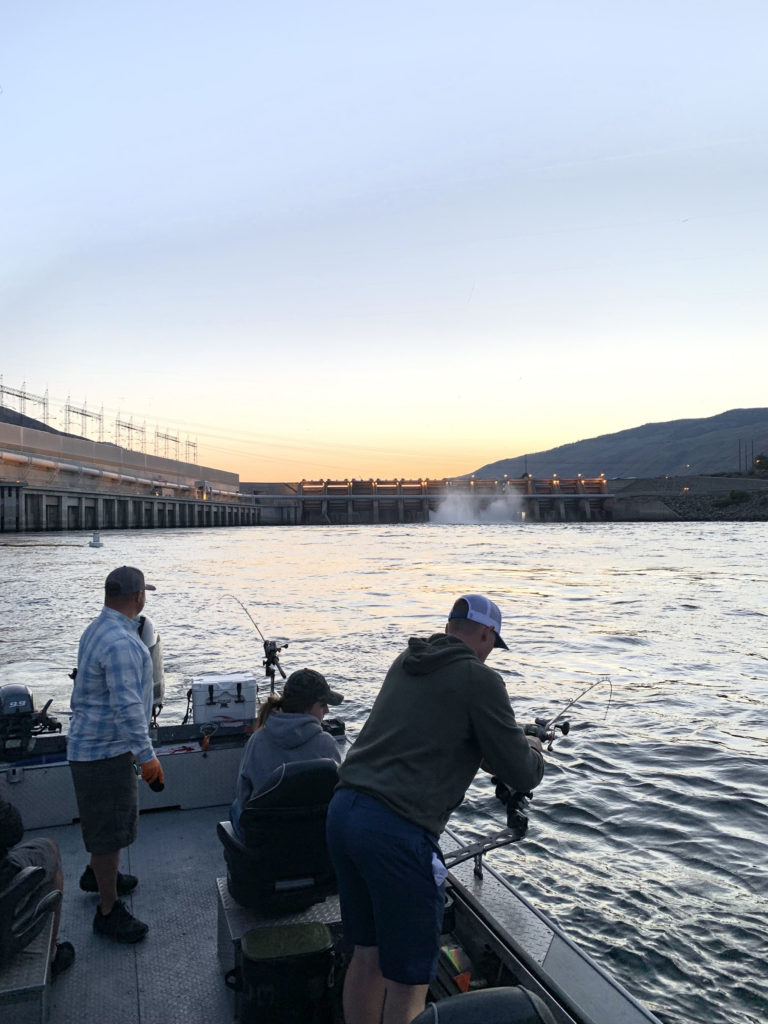
The fishing nerve center during August will be the Lower Columbia River mouth at Buoy 10, which is deemed one of the most hyped late-summer salmon locations in Washington.
Southern Exposure
The Washington Department of Fish and Wildlife (WDFW) indicates the Columbia River combined wild and hatchery coho forecast is 997,200 (up from 829,800 in 2021) and is more than double the 10-year average. The return of hatchery coho alone is expected to be the largest since 2014. Add to that a relatively good Columbia River fall Chinook forecast of 484,900 which is up from the actual return of 481,300 in 2021 and you’ve got a plenty of salmon migrating up the Big C!
The fishing season from Buoy 10 up to West Puget Island will get underway for Chinook retention from August 1-September 7, with only hatchery Chinook allowed to be kept August 1-24. The daily adult limit is two salmon with no more than one hatchery Chinook; release wild Chinook from August 1-24, and wild coho the entire season.
The red navigational Buoy 10, just south of the Port of Ilwaco, marks the western boundary of this expansive 20-mile fishing area. Here, the river’s brackish water collides with the briny ocean and heads upstream to the Tongue Point-Rocky Point boundary above the Astoria-Megler Bridge. Just like in past years, if you haven’t already booked a hotel or moorage don’t expect to find any at the surrounding marinas in Washington and Oregon. You’ll still be able to get your boat into the water at various boat ramps but be patient and expect long wait times at the ramps.
While the red navigational marker is a place anglers flock to especially for coho, it typically isn’t the hotspot, and most will go to other areas along the lower river. One of those popular locations is the Desdemona Sands area located in the middle of the river above and below the Astoria-Megler Bridge. This area boasts a mid- to late-flood tide show along a series of paths flanked by shallow sand bars. During an early morning flood tide, try along the Wing Walls just outside of Ilwaco, which are rotten pilings from an old fishing cannery. (Do be aware: It is known to be a snaggy spot since you troll closely to the sunken pilings that tend to grab your fishing line.) The buoy line just outside the charming town of Astoria where huge ocean-bound freightliners anchor up is another decent location. Many will also focus their time below the bridge and just off the Port of Astoria Marina.
On the Washington side just above the Astoria-Megler Bridge are three long underwater channels alongside Highway 401 where salmon stage, depending on the tide. Other spots are the Church Hole off Fort Columbia State Park, and from the Fort Stevens State Park on the Oregon side west toward Hammond.
The gear in the lower river fishery usually consists of a weighted diver or drop ball sinker of 8- to 10-ounces with a KoneZone- or Fish-Flash-type flasher tied to a leader with a whole or cut-plug herring or anchovy in 30 feet of water. Anglers will need to constantly check their bait as it will get tattered while being dragged along the sandy bottom or from the extremely strong tides. Many will also put an anchovy plastic bait holder on the bait’s head to protect it from getting ruined. You can try spinners like a Toman’s Thumper Flex with a blade in red/white or chartreuse attached to a plastic squid or a Brad’s Super Bait Cut Plug lure.
Staying in the Sound
If you don’t feel like making the long drive to the southwestern coast, there are plenty of choices around the Puget Sound region. Those options include the Strait of Juan de Fuca off Sekiu and Port Angeles (Marine Areas 5 and 6); the eastside of Whidbey Island (Area 8-1), which opens for coho on August 1; and, the eastside of Whidbey Island in the southern portion of Area 8-2 that opens for hatchery coho on August 13. Others to note: northern and central Puget Sound (Areas 9 and 10); south-central Puget Sound (Area 11); Hood Canal south of Ayock Point (Area 12); southern Puget Sound (Area 13); Quilcene Bay opens for coho opens on August 1; and, the inner-Elliott Bay opens for Chinook August 5-8 only.
Some areas may close early or revert to Chinook non-retention if the salmon guideline is achieved.
A list of statewide salmon fisheries can be found on the WDFW website at: wdfw.wa.gov. Lastly, be sure to bring along your crab pots for a chance to bring home some Dungeness crab; details can also be found on the WDFW site. In the next issue of the magazine, I’ll dive into early fall salmon fishing options. I’ll see you on the water very soon!


